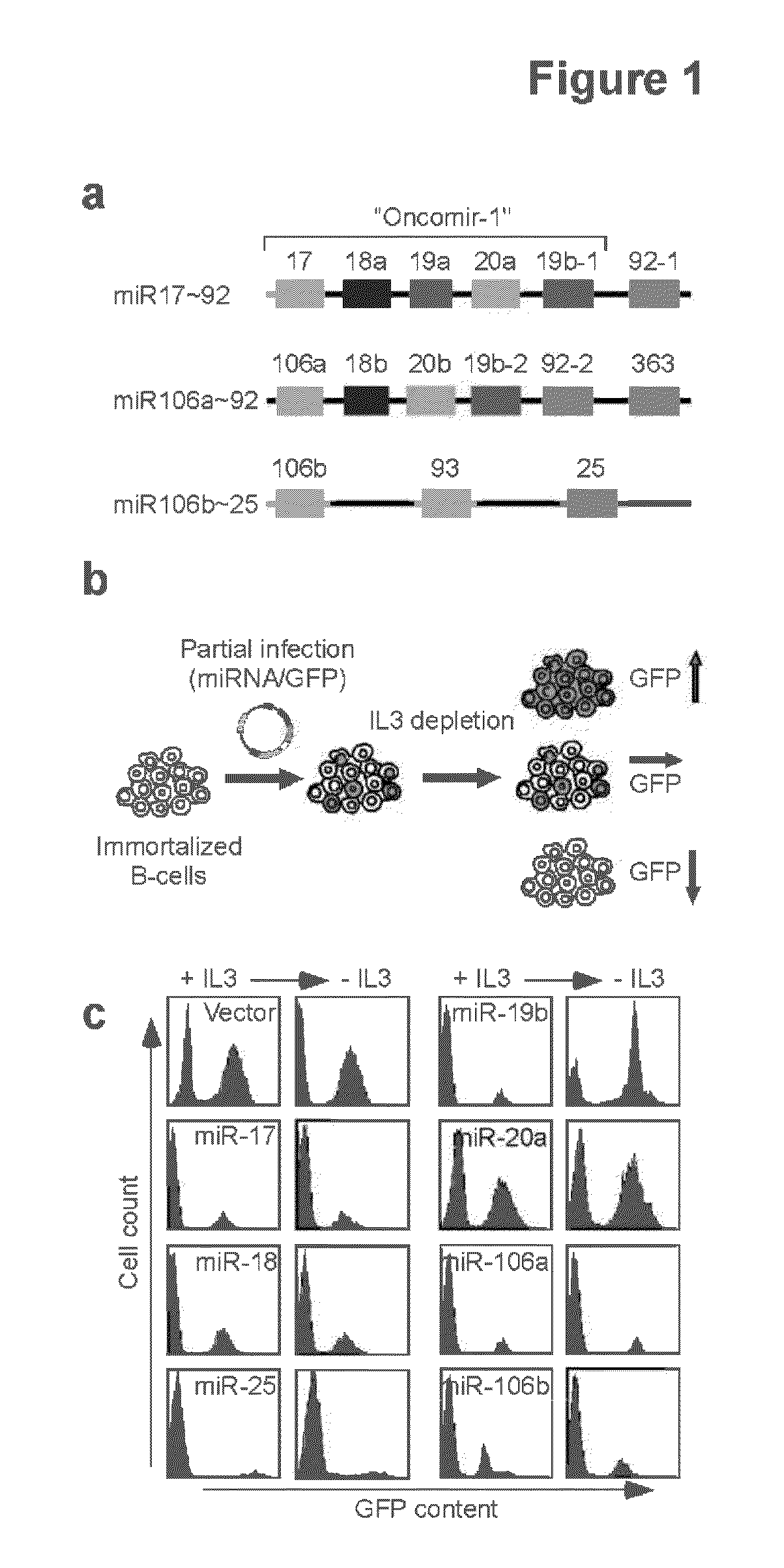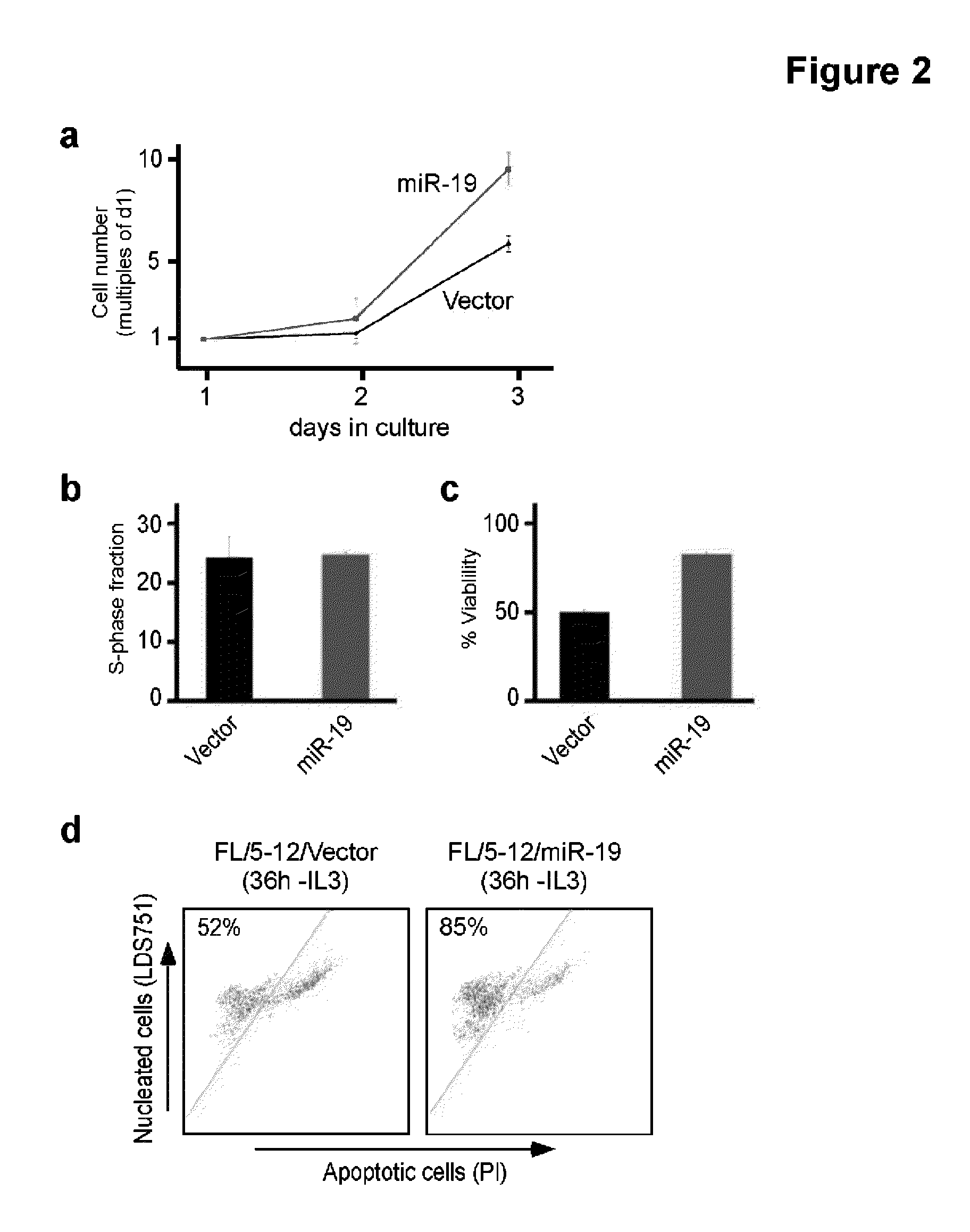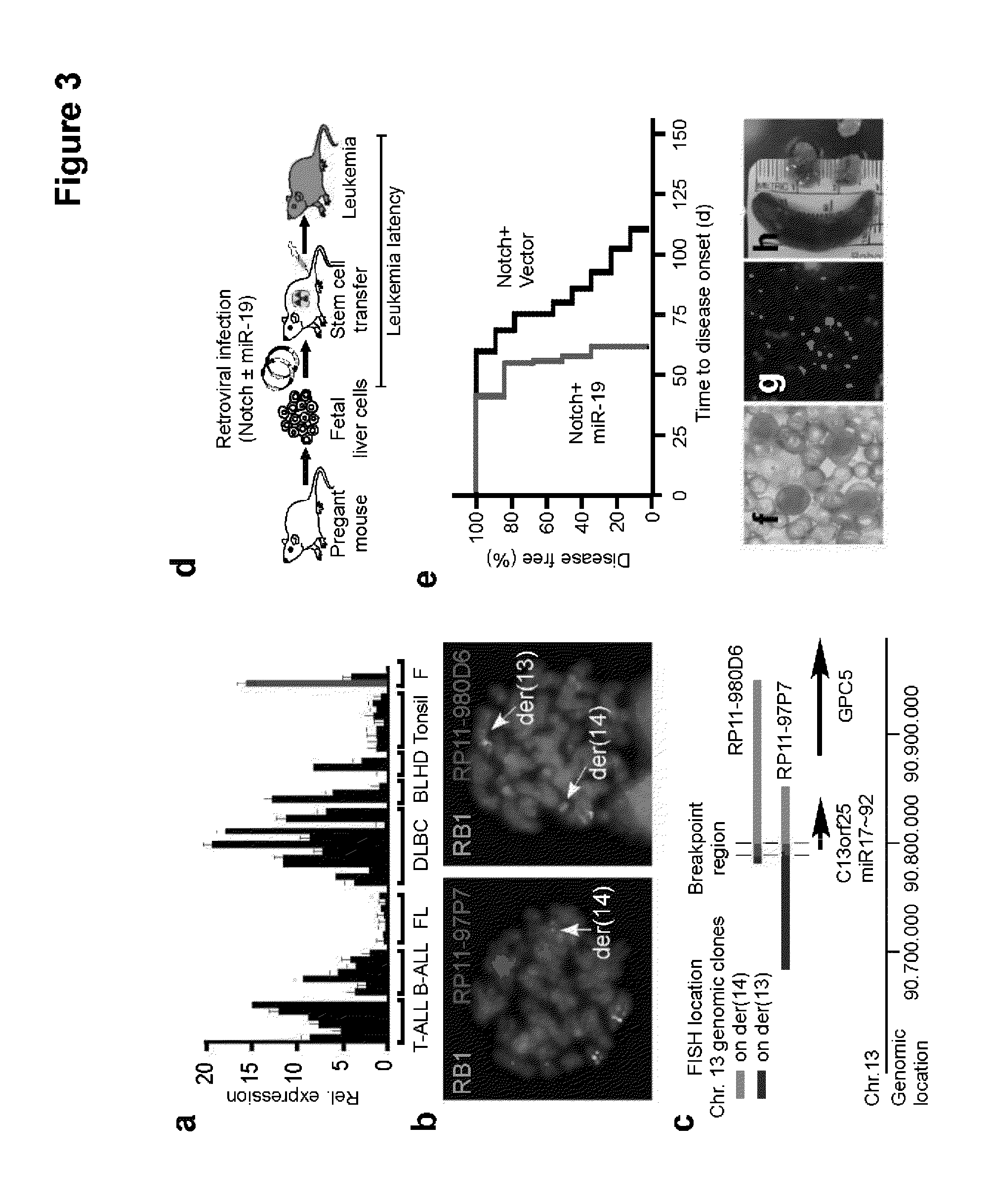Methods and Compositions for the Detection and Treatment of Cancer involving miRNAs and miRNA Inhibitors and Targets
a technology of mirna inhibitors and compositions, applied in the field of cancer diagnosis, management and treatment, can solve the problems of heterogeneous tumor types defined by conventional classification schemes, and achieve the effects of enhancing the efficacy of nucleic acids and oligonucleotides, enhancing the uptake, and improving the stability
- Summary
- Abstract
- Description
- Claims
- Application Information
AI Technical Summary
Benefits of technology
Problems solved by technology
Method used
Image
Examples
example 1
[0193]MicroRNAs (miRNAs) are ubiquitous regulators of biological processes involved in normal development, in differentiation and in diseases, including cancer. They act by regulating gene expression at the transcriptional and translational levels (Bartel, 2004). The 17˜92 cluster of miRNAs is highly expressed in hematopoietic cancers and enhances lymphoproliferation and c-Myc-induced leukemogenesis / lymphomagenesis in vivo (He, et al., 2005) (Xiao, et al., 2008). The 17˜92 cluster and its paralogues are also expressed in diverse solid tumors, including those derived from breast, colon, lung, pancreas, prostate, and stomach (Volinia, et al., 2006) (Petrocca, et al., 2008).
[0194]Using an in vitro hematopoietic transformation assay, we determined that, of the miRNAs in the 17˜92 cluster, surprisingly, overexpression of only miR-19 protects interleukin-3 (IL3)-deprived FL5-12 lymphocytes from apoptotic death. We also: (1) demonstrated that miR-19 is highly overexpressed in aggressive le...
example 2
[0262]microRNAs (miRNAs) are ubiquitous regulators of biological processes involved in normal development, in differentiation and in diseases, including cancer. They act by regulating gene expression at the transcriptional and translational levels (Bartel, 2004). The regulation of gene expression by miRNAs is complex. Many mRNAs contain, within their 3′UTRs, binding sites for multiple miRNAs, and most miRNAs can potentially target a large number of genes (Bartel, 2004). It is clear that not every miRNA binding site predicted by sequence analysis contributes to a phenotype. Conversely, multiple miRNAs can affect a single cellular pathway (Mavrakis, et al., 2010), (Li, et al., 2007).
[0263]T-ALL arises as a consequence of several cooperating genetic lesions (Aifantis, Raetz, & Bu, 2008). For example, most cases harbor activating lesions of NOTCH1 (Weng, et al., 2004), and tumor suppressor genes, including PTEN (Palomero, et al., 2007); NF1 (Balgobind, et al., 2008); PHF6 (Van Vlierberg...
PUM
| Property | Measurement | Unit |
|---|---|---|
| temperature | aaaaa | aaaaa |
| pH | aaaaa | aaaaa |
| morphology | aaaaa | aaaaa |
Abstract
Description
Claims
Application Information
 Login to View More
Login to View More - R&D
- Intellectual Property
- Life Sciences
- Materials
- Tech Scout
- Unparalleled Data Quality
- Higher Quality Content
- 60% Fewer Hallucinations
Browse by: Latest US Patents, China's latest patents, Technical Efficacy Thesaurus, Application Domain, Technology Topic, Popular Technical Reports.
© 2025 PatSnap. All rights reserved.Legal|Privacy policy|Modern Slavery Act Transparency Statement|Sitemap|About US| Contact US: help@patsnap.com



